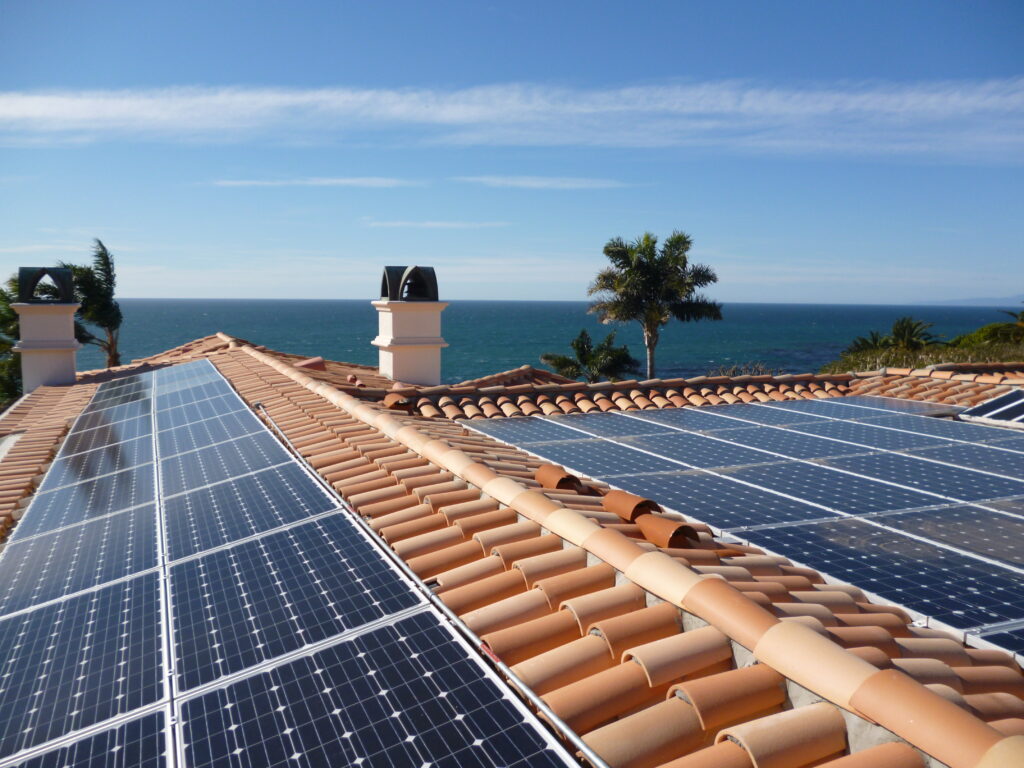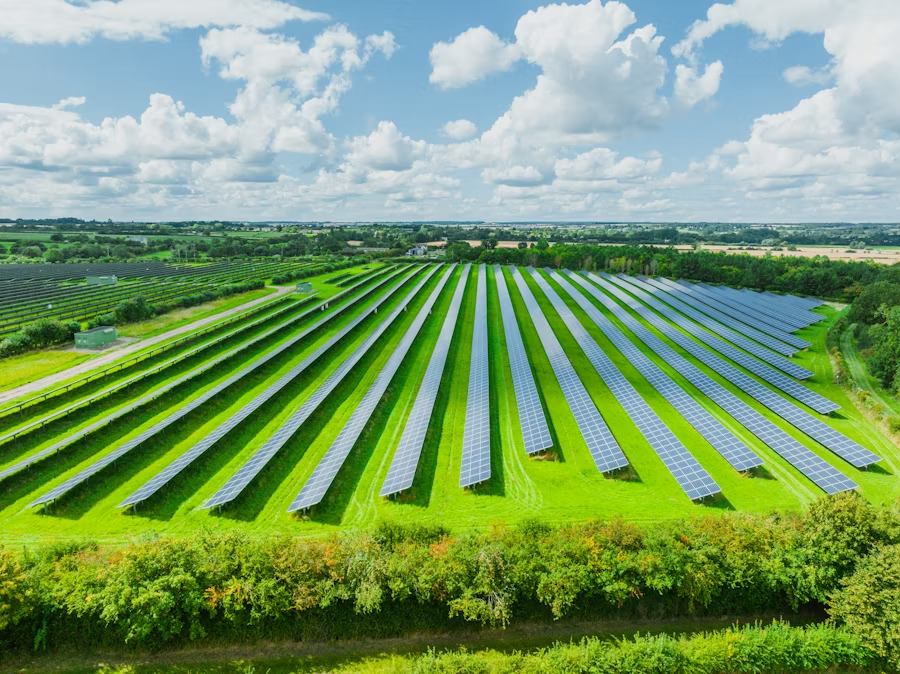On the ongoing subject of not seeing that which is obvious, we keep getting notifications like “Rooftop solar’s in trouble” or “The clean-energy manufacturing boom is going bust” or “Tax credits throttled” or “With little explanation, Trump throws the wind industry into chaos”. What it all comes down to is that without subsidies alternative energy costs too much so people don’t want to buy it or, in consequence, invest in it. Which would suggest to unsophisticated minds that it’s not actually cheaper or more dependable than the stuff they do want to buy and invest in. Or more bluntly it costs more and works poorly. But the debate on climate is not the place for such plain speech, apparently.
The scale of the subsidies can be hard to grasp, partly because as is typical of governments they proliferated absurdly. Thus the New York Times warned that:
“The Trump administration is preparing to terminate $7 billion in federal grants intended to help low- and moderate-income families install solar panels on their homes, according to two people briefed on the matter.”
Why, if they’re cheaper, poor people need to be paid to switch was not addressed in the piece. Instead, it offered the usual stale propaganda:
“The idea was to reduce the use of fossil fuels, the burning of which is dangerously heating the planet, while also helping to lower electricity bills.”
Even if they don’t make power cheaper once you account for the other subsidies, surely if they lower electricity bills people struggling to make ends meet will flock to them as they do to, say, discount stores. (Nor, we apparently need to point out, does activists rushing to sue change the economics.)
The throttled piece, from Canary Media, whimpers that:
“Trump admin tightens vise on wind and solar with new tax rules/ The guidance will make it harder for developers to qualify for federal tax credits before they expire under the GOP megalaw, another blow to clean energy.”
But if this stuff is now cheaper as well as better, leading to an unstoppable energy revolution, why does losing tax credits cause it to stop? And the cruelty of this policy is that, Heatmap explains:
“For more than a decade, renewable developers needed to show only that they’d spent 5% of the total cost of the construction to qualify in a given tax year. Once the new rules kick in next month, almost all new projects will need to actually begin physical construction to be eligible.”
It’s an outrage! Physical construction? What’s wrong with the rhetorical kind… other than the admitted difficulty of powering anything except your bank account with it? Including that if subsidies are wound down, people rush to grab them before they’re gone, showing those with eyes to see that they were distorting investment decisions. (Indeed, a recent Canadian government briefing note warned that massive U.S. subsidies to “green fuel” were causing it to flood our market because we weren’t as aggressively giving away money to distort the market.)
On Trump throwing wind to the four winds, in the form of ordering a halt to construction at a giant offshore facility Revolution Wind off Rhode Island, the Times take was, predictably, that “Legal experts say there is little basis for blocking the projects.” But Matthew Wielicki explains that:
“Revolution Wind, Ørsted’s bloated offshore brainchild, lurks 15 miles south of Rhode Island’s coast, poised to feed power to Rhode Island and Connecticut. Up to 65 turbines and two substations promise 700 MW… enough for 350,000 homes, they claim. But let’s cut the spin: Connecticut grabs 300 MW, Rhode Island 400 MW, all at a locked-in 9.8 cents/kWh for 20 years… cheaper than New England’s retail average? Sure, but only if you ignore the massive subsidies propping it up.”
As they do. And they ignore the admittedly vague national security concerns behind the cancellation. And the extremely obvious extraordinarily destructive ecological impact of this “green” energy. Unlike Wielicki, who catalogues the real cost of this power once you factor in subsidies, and not just the economic cost. He also writes:
“Picture this: Massive steel monopiles, up to 12 meters wide for turbines, 15 for substations, hammered into the seabed like industrial spikes. Each gets a rock apron, devouring 0.7 acres, stacking 2-4 feet high to fight erosion. Total toll? 190 acres of mangled seabed in a 97,000-acre lease… plus 155 miles of inter-array cables and 42 miles to shore, buried 4-6 feet deep but still scarring the ocean floor. This isn’t clean energy; it’s an underwater industrial zone.”
As he summarizes it: “This halt vindicates everything I’ve warned about offshore wind: Low power density demands sprawling setups that trash habitats.”
As a matter of fact, it turns out the American government did know about it. But in its devotion to promoting itself as a promoter of the environment it chose to ignore it. A lengthy article by Michael Shellenberger on Public explains that while the Biden administration loudly insisted that the offshore wind projects it was permitting, promoting and subsidizing complied with the 1970 National Environmental Policy Act, they knew it didn’t and indeed that Revolution Wind in particular was in “a crucial ‘magical space for marine animals’ at risk of extinction.” Somehow mainstream journalists failed to discover it, perhaps because they’re essentially propagandists not dispassionate and skeptical observers.
Even Scientific Communism, which once upon a time was a grave and sober journal not some tabloid, bellows:
“Higher Bills, Hotter Planet: What Trump’s Megabill Means for You/ Household energy expenses will rise, as will greenhouse gas emissions, as a result of the Trump administration’s One Big Beautiful Bill Act”
Indeed. Is that science at all, never mind accurate science? Well, no. It’s some propaganda churned out by “modeling released Friday by the Rhodium Group” which boasts of itself that:
“We help public and private decision-makers understand what kind of climate and energy future we are on track for, and what matters most for reducing greenhouse gas emissions – at the state, national, and international levels.”
Even putting all that bias aside, what’s the logic in a form of energy that’s supposedly cheaper yet collapses if not subsidized? Nobody knows. Nobody says.
Instead they try to bribe Republicans with public money. A New York Times piece complains that:
“In Georgia, Republicans Vote to Kill Green Jobs but Face Little Fallout/ In Cedartown, Ga., a solar recycling company’s plan to hire 1,200 people could be upended by Republicans in Congress.”
Don’t they know how the game is played? Perhaps not, but the journalist seems not to know how the economy works. She writes:
“It’s the kind of project that scientists say could ultimately reduce carbon emissions and that economists call a major step in bringing manufacturing back to the United States from China. And it spells opportunity in Cedartown, Ga., a city of about 10,000, where Pirkle’s Deli on Main Street does a brisk lunch business but other establishments see little foot traffic. Once operational, Solarcycle would be the area’s largest employer. And yet President Trump’s ‘big, beautiful’ bill has stopped the Solarcycle factory in its tracks. The legislation, which passed the House and is now being debated in the Senate, would essentially eliminate the tax breaks that companies have been counting on to build new wind and solar projects, electric vehicle battery factories and more.”
Thus it’s an incredibly vibrant economic project that will save the planet and the U.S. economy and win the new Cold War. Yet without oodles of free money it crumples. How strange.
Speaking of the new Cold War, and to return to the notion of wise China betting on wind while dumb America goes with AI or natural gas or something, the New York Times “Climate Forward” recently alerted its readers to a BloombergNEF piece, but not its implications, under the neutral heading “Clean Energy”. As the Times summarized:
“Global investment in new renewable energy projects hit a record $386 billion in the first half of 2025, up 10 percent from the previous year, according to a new report from BloombergNEF, a research firm. In the U.S., however, investment fell 36 percent from the second half of last year.”
What’s more, the Bloomberg item says:
“BNEF finds that utility-scale solar photovoltaic investment was particularly hit, falling 19% compared to the first half of 2024. The markets that saw the largest year-on-year declines in investment – including mainland China, Spain, Greece and Brazil – have seen rising curtailment and greater exposure to negative power prices, signaling that concerns over revenue were paramount for investors.”
So what governments are continuing to subsidize with other people’s money based on fatuous assessments of their own capacity for foresight are not good news.
Heatmap gets it equally wrong, noting the same Bloomberg item and adding:
“The European Union, on the other hand, ratcheted up spending on renewables by 63% - or nearly $30 billion – in the first half of this year compared to the second half of 2024. Drawing an even sharper contrast, investments into both onshore and offshore wind made up the bulk of the growth in Europe as the Trump administration has placed the harshest restrictions on wind turbines of any other energy source.”
So it’s not about what’s working, it’s about who’s most stubborn about subsidizing failure. Which isn’t an achievement though they do a plausible job of making it sound like one.
A Heatmap essay we actually can provide a link to, under the implausible headline “Now We Decide the Future of U.S. Climate Policy”, laments that someone else already decided it wrongly:
“Today, the Inflation Reduction Act would have turned three years old – if it hadn’t been buried alive in a big, beautiful grave. While the IRA was a hodgepodge of programs salvaged from President Biden’s far more ambitious Build Back Better agenda, it still represented the biggest climate investment in U.S. history. It catalyzed over $360 billion in energy and manufacturing investments and was expected to drive the installation of over 155 gigawatts of new solar and wind energy by 2030. And now Republicans have taken a sledgehammer to its achievements. The timing could not be worse – not just for the climate, but also for the energy systems that we rely on. At a moment when the energy sector requires $1.4 trillion worth of upgrades by 2030 just to keep up with rising energy demand and increasingly erratic weather, Republicans have instead delivered a one-two punch of tariffs and tax hikes, sabotaging the industrial base required to deliver those investments and raising the retirement age of our power generation fleet.”
That it might be the worst imaginable time to devote hundreds of billions of dollars to the wrong kind of energy, or that the $360 billion already spent was in large measure wasted, never seems to cross the author’s mind. Nor does it that an “energy transition” that depended entirely on subsidies to create inefficient power sources that would never have won out on a level playing field isn’t a revolution, it’s a bubble.
P.S. Some people claim it’s not a “level playing field” because of alleged subsidies to hydrocarbon energy and unquestionably the U.S. tax code is a hideous hoorah’s nest of handouts including a new one for “metallurgical coal”. But as the Energy Bad Boys point out, wind and solar don’t have to pay royalties for using federal lands, unlike “oil, natural gas, and coal.”



Jobs created by government subsidies aren’t really jobs. The government might as well just mail checks to random people and call it employment. Sadly there are a lot of people on the left who would be willing to do just that.